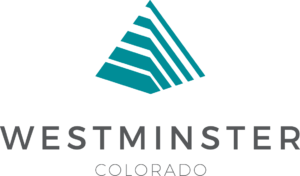Residents of Greeley, Colo. won’t be surprised to learn that their city has been named one of Livability’s 10 Most Affordable Cities in the U.S. But for Greeley to earn that distinction — and to be considered the best affordable place to live in Colorado — it had to beat out a host of strong contenders, including the five municipalities identified below.
Livability generated this list by identifying the most affordable places to live in the state (as determined by cost of housing, transportation, food, utilities and other key components of a household budget), and then factoring in important subjective considerations, looking for the kinds of neighborhoods, schools, and employment and leisure opportunities that encourage a prosperous future — for adults and children alike.
Without further ado, here are five Colorado cities that fit the bill:
1. Fort Collins
Northern Colorado’s Fort Collins was named one of Livability’s 100 Best Places to Live in part due to the strength of its business community, which features a mix of major employers like Anheuser Busch, Hewlett Packard , Kaiser Permanente, Wells Fargo and Xcel Energy , as well as innovative, entrepreneurial ventures that receive support from the Larimer Small Business Development Support Center and the Rocky Mountain Innosphere, the latter a technology incubator that supports clean energy, software and digital health startups.
Fort Collins is also home to picturesque Colorado State University, which offers a diverse array of undergraduate and graduate degrees, with the biological science programs among the most popular. And with a plethora of outdoor recreation opportunities that include everything from biking, hiking and white-water rafting, the overwhelming majority of Fort Collins residents maintain a healthy lifestyle.
2. Loveland
Located 30 minutes south of Fort Collins is Loveland, Colo., which has long been known as the “Sweetheart City,” thanks to its Valentine Remailing Program. Like Fort Collins it enjoys 300 days of sunshine a year and it’s a playground for outdoor enthusiasts, best-known for its fly fishing, golf courses and miles of bike paths along the Big Thompson River. It’s also conveniently located in the triangle between three major universities — the aforementioned Colorado State University, as well as the University of Colorado and the University of Northern Colorado.
Average monthly home ownership costs in Loveland are lower than those of the nation as a whole, with 91.5% of the homes having been built since 1990.
3. Longmont
Further south still is Longmont, Colo., located within easy driving distance of both Boulder and Denver. Life centers around Downtown Longmont’s eclectic mix of shopping, dining, arts and cultural attractions, as well as two of the area’s most lauded microbreweries, 300 Suns Brewing and Pumphouse Brewery. Again, there are outdoor recreation opportunities galore, including Mile-Hi Skydiving Center, Colorado’s largest skydiving facility.
Longmont is located in Boulder County, which is ranked third and fourth, respectively, among 64 Colorado counties in terms of healthy behaviors and health outcomes, even as residents spend 9.7% less than the national average on health care-related goods and services.
4. Westminster
Located just minutes northwest of Denver, suburban Westminster, Colo. (population 108,000) is a family-oriented community that features lots of great options for shopping and dining, highlighted by The Westminster Promenade, the Shops at Walnut Creek and the Orchard Town Center. The city is revered for its open spaces and lakes, which lend themselves well to walking, biking, boating and fishing.
Westminster also boasts a median household income of $64,844, the highest among the cities on this list.
5. Thornton
Last but not least, Thornton, Colo. is another suburb of Denver, which like Westminster features a high median household income yet presents a modest median home price of $208,300. Demand for new housing and commercial office space is on the rise, with the city issuing 36% more single-family permits in 2015 as compared with 2014, as well as 19 new commercial building permits with a total valuation of $46.5 million.
Read original article here
